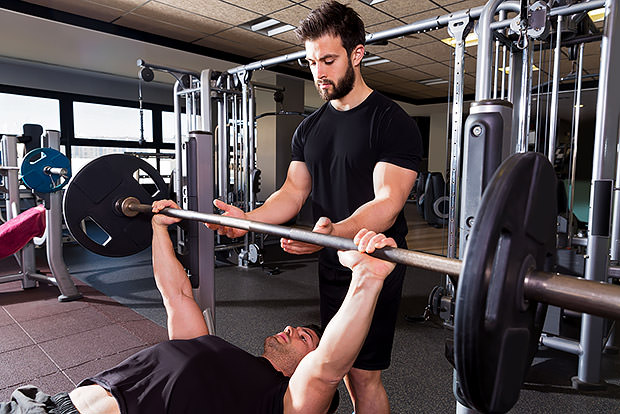
If you aren't reaching your strength training goals, it’s time to put down the light dumbbells and pick up a heavier set. When you begin exercising, light weights may produce results, but within a year, you will transition from a novice to a more advanced exerciser. Lifting heavier weights pays off by changing your body composition and improving your health and fitness.
Defining heavy weights
According to the American Council on Exercise, heavy weight lifting requires using a weight that can be lifted 3 to 10 times with the correct form. More specifically, lifting heavy weights is based on your one-repetition max (1RM). This is the maximum amount of weight you can safely lift for one repetition of an exercise.
Beginners and heavy weights
Research shows that if you are new to exercise, you can improve strength with weights as low as 45-50% of your one-repetition max. Studies suggest that beginners should start with weights that range from 50-60% of their one-repetition max to ensure that they learn proper form before moving on to exercises with heavier weights.
Progress and plateaus
The American College of Sports Medicine’s (ACSM) position on resistance training is that more weight may be necessary to progress and continue to see results. Greater strength gains have been found when using a load that allows for 3-5 repetitions when compared to lighter weights that allow for higher repetitions. The ACSM recommends that once you can lift 1-2 repetitions beyond your goal during two consecutive workouts, it is time to increase the weight by 2-10%. Doing so will help to prevent strength training plateaus.
Tips for incorporating heavier weights
The method for determining a one-repetition max differs depending on the exercise and the muscle group. While it is a simple test, seek the assistance of a qualified fitness trainer to help you establish this baseline. Then seek his or her assistance in developing an effective program. Studies show that when people self-select resistance intensity, the weight is often too low, typically only 38-58% of the one-repetition max.
To improve muscular strength, the ACSM recommends that beginner-to-intermediate exercisers select weights that are 60-70% of their one-repetition max. Start with 1-3 sets of 8-12 repetitions. Advanced exercisers should aim for loads 80-100% of the one-repetition max with 2-6 sets of 1-8 repetitions. The heavier you lift, the longer your rest period should be. Beginner and intermediate programs with lighter loads should include a 1-2 minute rest between exercises using the same muscle groups, while programs with heavier loads should increase the rest period to 2-3 minutes.
Sources



 5 Ways to Burn 300 Calories this Weekend
5 Ways to Burn 300 Calories this Weekend
 The Best Home and Garden Chores for Burning Calories
The Best Home and Garden Chores for Burning Calories
 5 Tips for Making Exercise a Habit
5 Tips for Making Exercise a Habit
 Best Ways to Stay Safe during Exercise in Hot Weather
Best Ways to Stay Safe during Exercise in Hot Weather
 11 Tips for Exercise Motivation
11 Tips for Exercise Motivation
 Signs You Need to Increase Exercise Intensity
Signs You Need to Increase Exercise Intensity
 Mistakes to Avoid When Setting Fitness Goals
Mistakes to Avoid When Setting Fitness Goals
 Essential Gear for Starting an Exercise Program
Essential Gear for Starting an Exercise Program

 Pinterest
Pinterest RSS Feed
RSS Feed